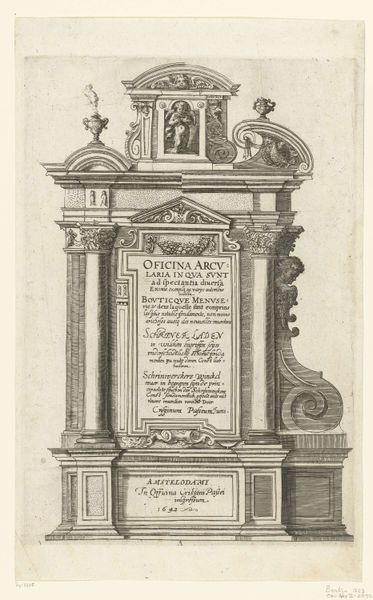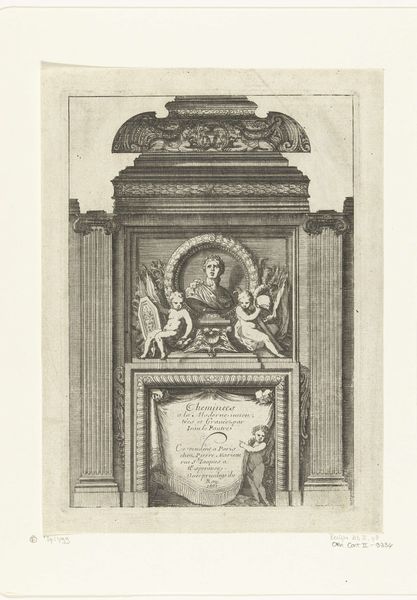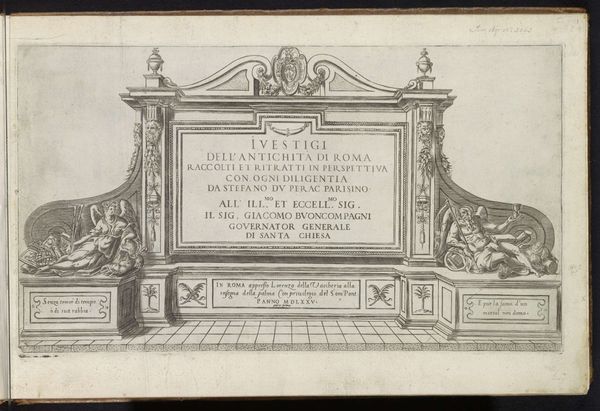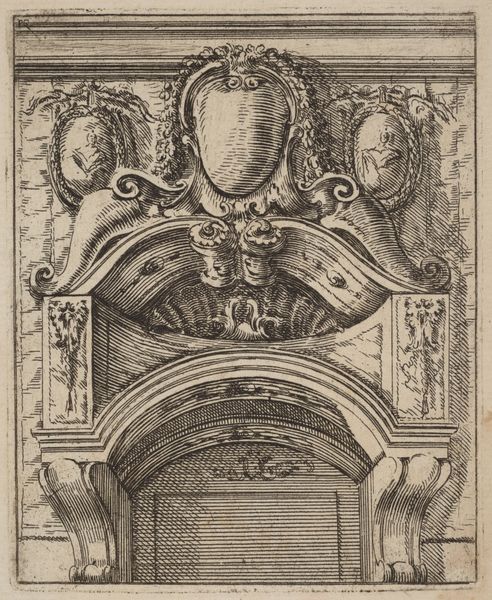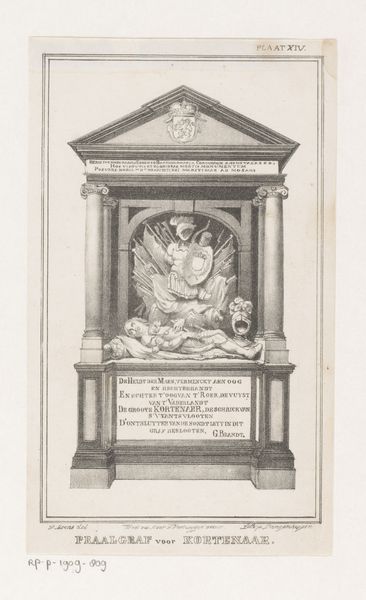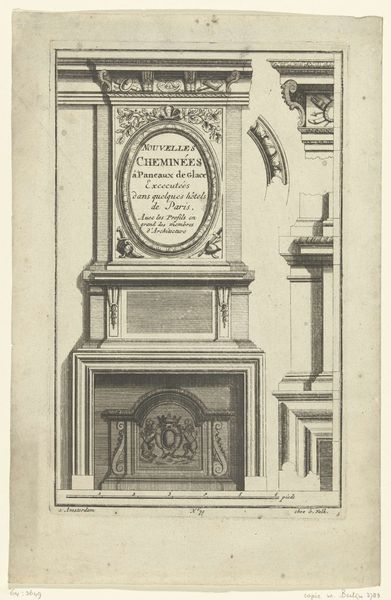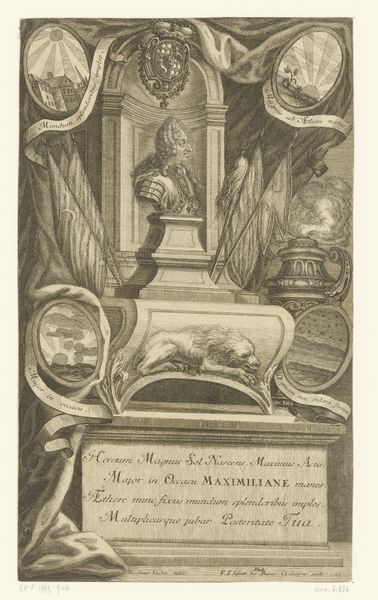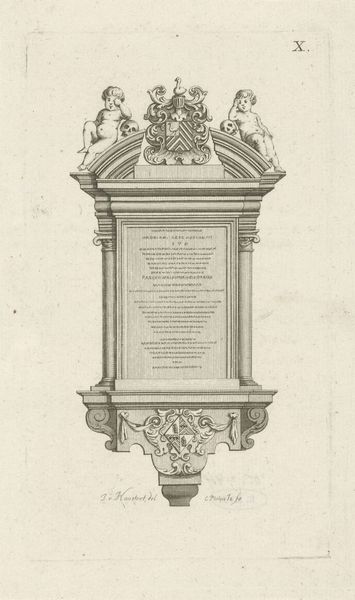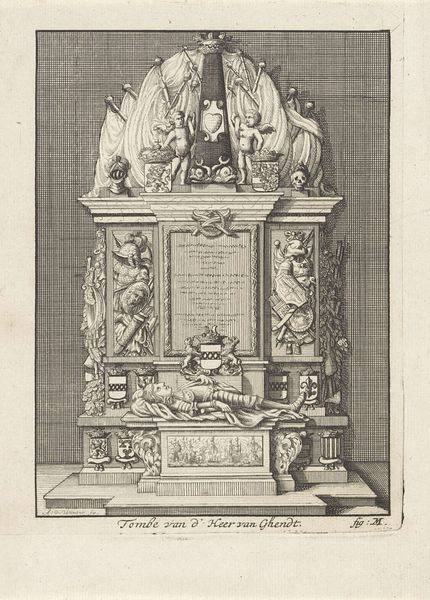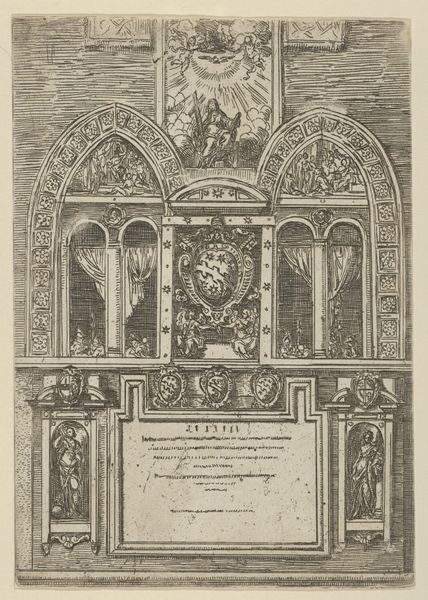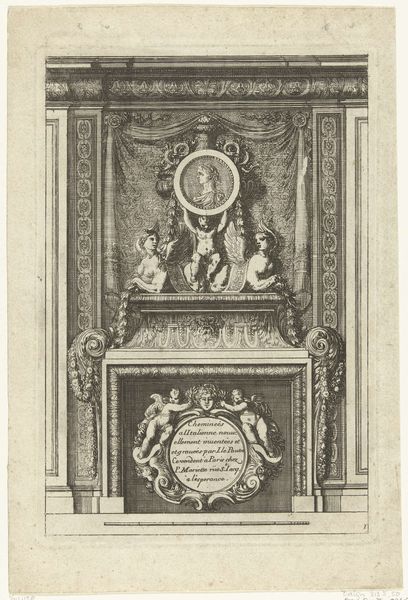
print, etching, engraving
#
baroque
# print
#
etching
#
landscape
#
engraving
Dimensions: height 91 mm, width 187 mm
Copyright: Rijks Museum: Open Domain
Editor: Here we have "Titelprent met sokkel in een landschap," an etching and engraving by Israel Silvestre, dating from before 1655. It features a pedestal inscribed with text, set in a landscape. What strikes me is the combination of this man-made structure amidst a natural setting. How do you read this piece? Curator: For me, this image invites us to consider the labor involved in its production and dissemination. Silvestre, the engraver, is a skilled artisan whose work straddles the line between 'high art' and craft. Notice the level of detail achieved through etching and engraving—consider the sheer amount of time and effort dedicated to producing these lines and textures, and then the further distribution of printed imagery. Editor: That's interesting, the physical labor. The inscription is pretty prominent; does that play into this materialist reading? Curator: Absolutely. Inscriptions in art of this period often acted as a direct line of communication between the artist, the patron, and ultimately the consumer. "Dedicated to Monseigneur Lovis de Ideade," it says. Consider how this act of dedication, of naming the patron, directly situates Silvestre’s labor within a network of power and consumption. He needs patronage for resources. Who controls those resources? How might those structures enable and also constrain him? Editor: So it's not just about aesthetics, but about who financed the work, and how the piece functioned in society. It gives the work another angle, from the art itself as the final result to the economic system surrounding its making. Curator: Exactly! Thinking about these economic dimensions can unlock how these objects shape our understanding of the world through its material reality, and those realities in the 17th century shaped everything about the artwork in view, down to its final presentation and intended use by those of higher status. What might this entail of artistic agency in shaping artistic creations?
Comments
No comments
Be the first to comment and join the conversation on the ultimate creative platform.
